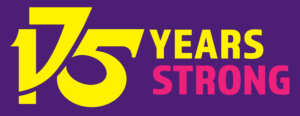In late 2019, representatives from the EIS had a meeting with the Scottish government to discuss what measures they would take in the event of a pandemic. It was just a routine planning meeting, among many other routine planning meetings, to make sure that guidance was in place to cover a range of hypothetical eventualities.
“The general view was that we had the basics there from previous scenarios,” says Larry Flanagan, EIS general secretary. “We didn’t anticipate a pandemic like Covid arriving on our shores.”
When Covid did arrive, however, it was bigger and more all-consuming than might have been envisaged – and quickly exceeded the plans that had been put in place. In those early days, fear of Covid was a genuine fear of death: a lethal disease was running rampant.
The introduction of the first national lockdown forced Scottish education into unprecedented challenges. For the EIS, a union formed in the 19th century, it necessitated a rapid and radical response, as the union sought to support both education provision and the wellbeing of its members.
It was impressive to see the relentless commitment of EIS activists and staff to their members, no matter where – or in what room of their houses – they were working. The strength of that commitment is an asset, the EIS is acutely conscious of.
In those early days, teachers were also working out their own roles as key workers. They were very aware of the detrimental effect on children of an extended period of absence from school: many had lost not only academic and peer support, but also access to a community that fed them, provided for them and looked out for them.
Many teachers therefore began delivering food to pupils’ houses, so as to ensure that children on free school meals didn’t go hungry. Provision for remote education was patchy, and non-existent in some households. In poorer areas, school staff went from house to house themselves, delivering pencils, pens and exercise books.

“The death count was increasing; we didn’t have a vaccine. Other than self-isolation, we didn’t have mitigations that worked,” says Flanagan. “So it’s to the credit of the teaching profession that they responded as positively as they did.”
Eventually, schools reopened after the first lockdown. The EIS had worked hard within the STUC, and with government agencies, to ensure priority was given to health and safety concerns. The union contributed to school guidance to maximise Covid mitigations in schools, colleges and universities.
And so began an extended process of dealing with new waves and new variants of the virus.
Face coverings became compulsory in schools (though not without a battle with the Scottish government). Teachers, unions, local authorities and government agencies joined together to form the Covid Education Recovery Group, which developed pandemic guidance for schools in Scotland – almost always consensually.
When the second lockdown was announced, in January 2021, the EIS – and teachers – were much readier for it. The EIS had produced a significant amount of guidance on how best to use remote[1]learning platforms in order to maximise quality.
And an EIS webinar on health and safety was viewed more than 10,000 times. This allowed the union to communicate with members, and to ensure that local authorities took the safety of school staff seriously.
In fact, EIS membership rose during the pandemic, as teachers looked to trade unions to keep them safe. “I suppose in one sense that is testimony to the fact that the work we’ve done has been understood and appreciated by members.” says Flanagan.
One particular area where teachers have been critical throughout the pandemic was in the awarding of qualifications to senior pupils. When Covid caused the cancellation of the national exam diet for the first time since its introduction in 1888, the Scottish government had only one recourse left to it: to trust the professional judgement of teachers. The EIS was very comfortable with this approach; it had in the past been critical of school qualifications based solely on high-stakes exams.
However, when public exams were cancelled in 2020, teachers went into lockdown without first having been properly prepared for the shift to teacher assessment. This resulted in a massive workload.
In addition, the Scottish Qualifications Authority sought to apply an algorithm to the teacher grades that built unfairness into the system. The EIS had to campaign to overturn the algorithm in favour of teachers’ professional judgement and greater fairness to pupils. This campaign, combined with an outcry from parents and pupils, forced the Scottish government to back down. It ultimately honoured teachers’ professional judgement unreservedly.
Although high-stakes exams returned this year, steps are underway to review this approach, the Scottish government having been persuaded, in part by the pandemic experience highlighting shortcomings in the existing exams system, that reform is needed.
With the roll-out of the Covid vaccine, new challenges developed. The EIS wanted to see teachers given priority status for the vaccine, in recognition of the risk they were taking daily in the classroom. But the Joint Committee on Vaccine and Immunisation was unmoved, deeming teachers collectively at low clinical risk.
“There’s been some tension around the failure to treat school staff as frontline workers,” says Flanagan. “They were treated as frontline workers in terms of the need to maintain service through the pandemic, but not in terms of prioritisation when it came to Covid-mitigation measures.”
Next, the EIS argued that pupils should be vaccinated, to mitigate Covid spread in schools: an argument that met with similar official resistance – until it became official policy.
Nonetheless, the EIS felt more fortunate than their counterparts in England: in Scotland, at least, there was open dialogue with government. While the union may not always have won the argument, at least it felt that its concerns were listened to along the way.
Flanagan said, “It was undoubtedly a singularly intense period for everyone involved in education. Absolutely exhausting for teachers and lecturers struggling to maintain provision, support children and young people with their own traumas, and maintain their own family lives. I think the response was heroic and I hope that the work we did as an Institute helped, both collectively and individually.”
ACKNOWLEDGEMENTS:
Research, interviews and substantive writing:
Adi Bloom
Design and lay-out:
Stuart Cunningham and Paul Benzie
Additional writing and research:
EIS Comms Team and assorted staff members
Printed by:
Ivanhoe Caledonian, Seafield Edinburgh
Photography:
Graham Edwards, Mark Jackson, Elaine Livingston, Toby Long, Ian Marshall, Alan McCredie, Alan Richardson, Graham Riddell, Lenny Smith, Johnstone Syer, Alan Wylie


Thanks to the many former activists and officers who gave of their time to be interviewed and taken a stroll down memory lane. And of course a very special thanks to the EIS members who created this history through their activism and commitment to the cause of Scottish Education.
© 2022 The Educational Institute of Scotland